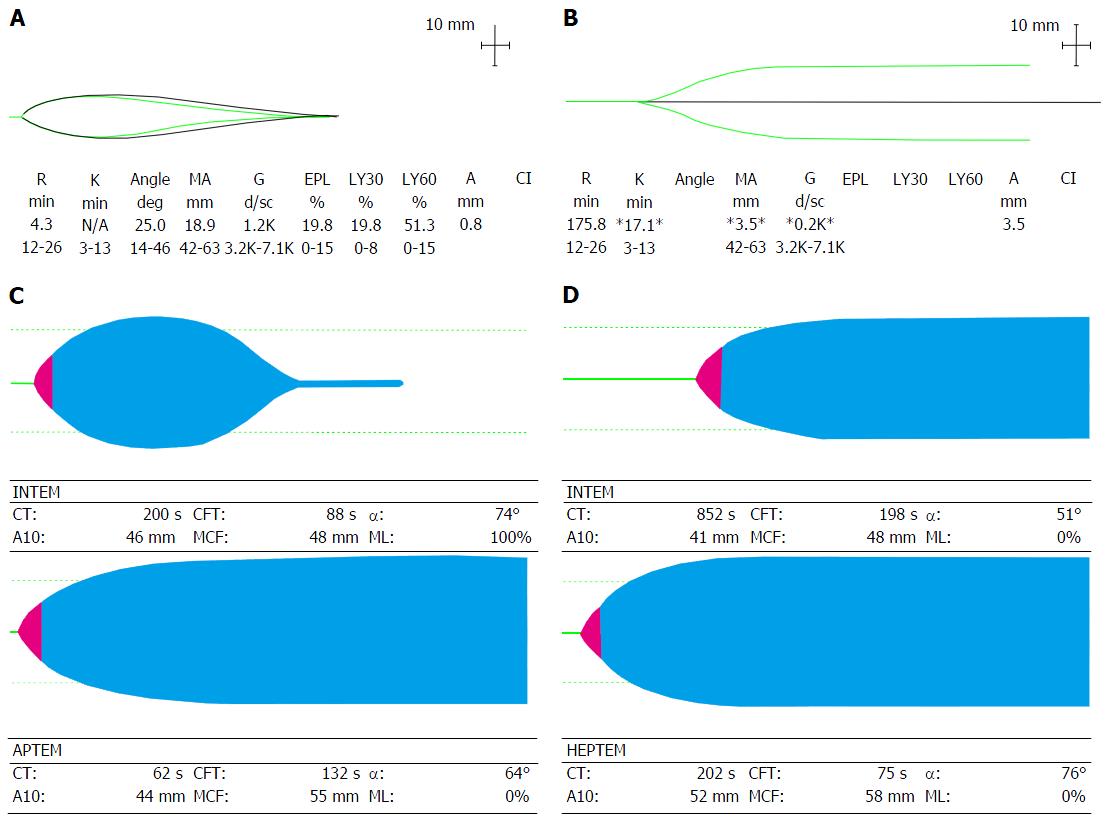Copyright
©The Author(s) 2015.
World J Transplant. Dec 24, 2015; 5(4): 165-182
Published online Dec 24, 2015. doi: 10.5500/wjt.v5.i4.165
Published online Dec 24, 2015. doi: 10.5500/wjt.v5.i4.165
Figure 7 Viscoelastic traces depicting hyperfibrinolysis (A) on thromboelastography and (C) on rotational thromboelastometry with aprotinin thromboelastometry test (reversal of fibrinolysis with aprotinin); Viscoelastic traces depicting heparin-like effect (B) on thromboelastography and (D) on Rotational thromboelastometry with reversal of heparin-like effect on heparinase modified thromboelastometry.
APTEM: Aprotinin thromboelastometry; HEPTEM: Heparinase modified thromboelastometry; INTEM: Intrinsic thromboelastometry; CT: Clotting time; CFT: Clot formation time; A10: Clot firmness (amplitude) at 10 min; MCF: Maximum clot firmness; ML: Maximum lysis.
- Citation: Donohue CI, Mallett SV. Reducing transfusion requirements in liver transplantation. World J Transplant 2015; 5(4): 165-182
- URL: https://www.wjgnet.com/2220-3230/full/v5/i4/165.htm
- DOI: https://dx.doi.org/10.5500/wjt.v5.i4.165









